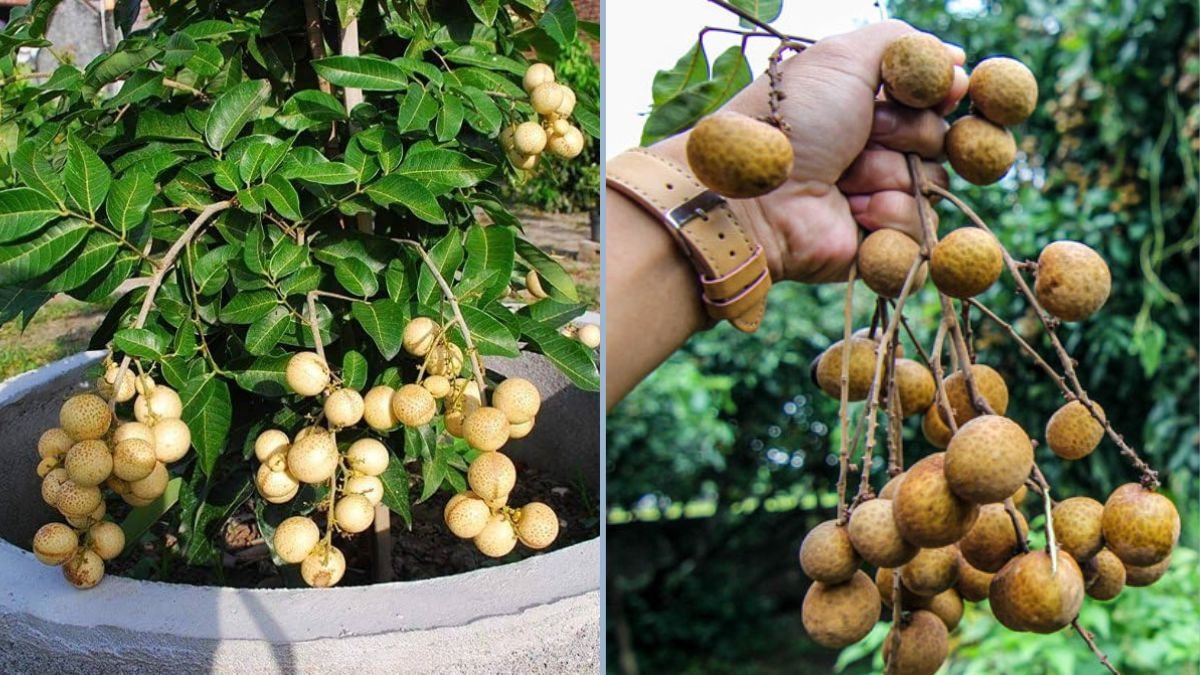Longan (Dimocarpus longan) is a tropical fruit tree closely related to lychee, prized for its sweet, juicy fruits and high nutritional value. Known as “dragon eye” fruit due to its translucent flesh and dark seed, longan has gained popularity among home gardeners and urban farmers. While traditionally grown in orchards, longan can also thrive in pots, making it ideal for balconies, terraces, or small gardens.
In this guide, we’ll cover how to grow longan plants in pots, care for them, and ensure healthy growth and fruiting, even in limited spaces.
1. Why Grow Longan in Pots?
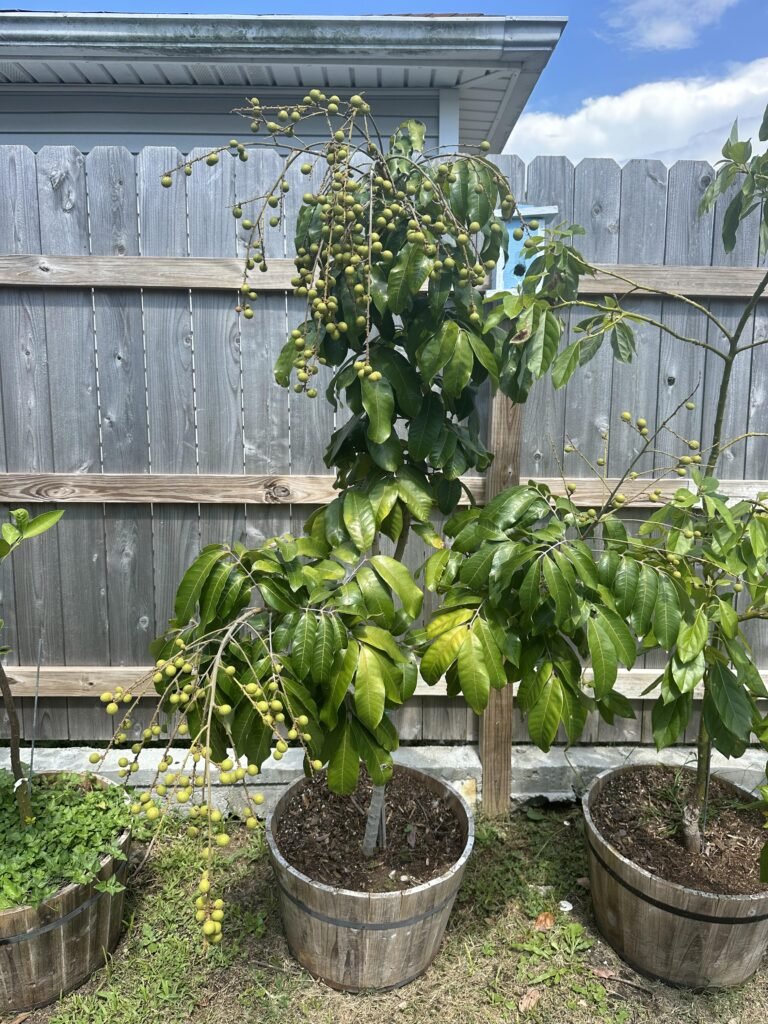
Growing longan in containers offers several advantages:
- Space-saving: Perfect for homes without large gardens.
- Mobility: Move pots to optimize sunlight or protect from extreme weather.
- Soil control: Easily manage soil type and drainage for healthier roots.
- Pest management: Easier to monitor and control infestations.
- Urban gardening: A way to enjoy exotic fruits at home regardless of space constraints.
Container cultivation allows gardeners to grow healthy longan trees and enjoy fresh fruits without a traditional orchard.
2. Choosing the Right Longan Variety
Selecting the right variety is key for successful container growth:
- Eureka Longan: Sweet, juicy, and suitable for pot cultivation.
- Biew Kiew: Popular for urban growers due to compact size.
- Dwarf varieties: Ideal for terraces, balconies, and small spaces.
Choosing the right variety ensures manageable growth and better fruiting.
3. Propagation: Seeds vs. Saplings
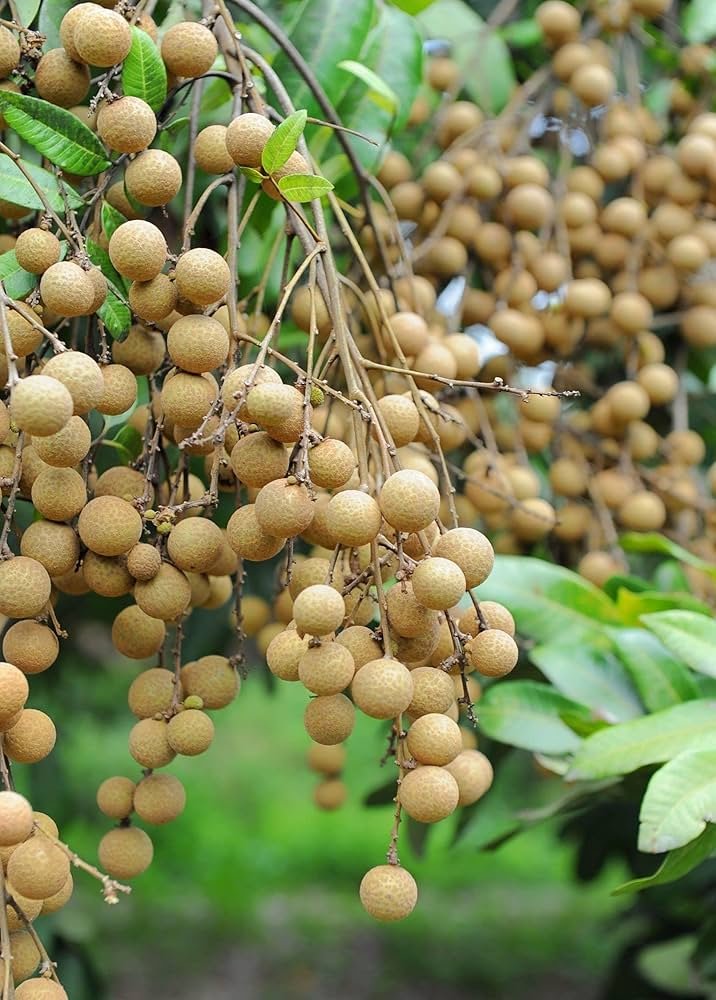
Longan can be propagated from seeds or young plants:
- Seeds: Extracted from ripe fruits. They are cost-effective but take longer to bear fruit (5–7 years).
- Saplings: Young plants from nurseries provide faster growth and earlier fruiting (2–3 years).
💡 Tip: For quicker results, saplings are preferred. Seeds are suitable for beginners who enjoy the propagation process.
4. Selecting the Right Pot
Container size and material are crucial for longan growth:
- Size: Minimum 18–24 inches in diameter and depth for young plants; larger pots allow root expansion.
- Material: Plastic, terracotta, or ceramic. Terracotta allows better aeration but dries faster.
- Drainage: Multiple holes prevent waterlogging and root rot.
- Mobility: Lightweight pots make relocation easy to maximize sunlight exposure.
A suitable pot ensures healthy root development and robust growth.
5. Preparing the Soil Mix
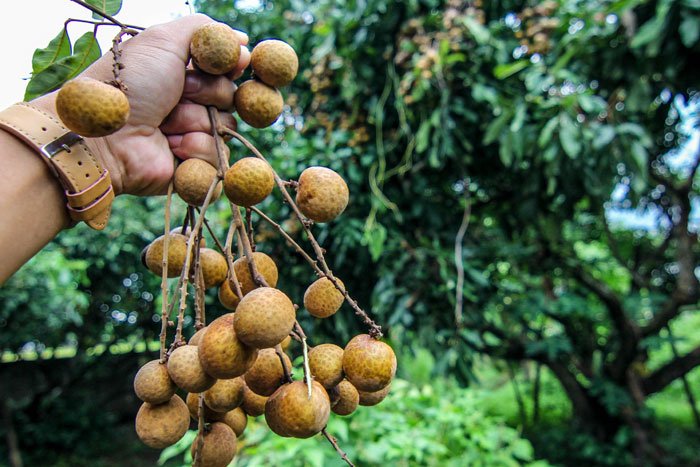
Longan prefers well-draining, fertile soil:
Recommended soil mix:
- 40% garden soil or topsoil
- 30% organic compost or well-rotted manure
- 20% coco peat or peat moss for moisture retention
- 10% perlite or coarse sand for aeration
💡 Tip: Avoid heavy clay soil, which retains water and can cause root rot.
6. Planting Longan in a Pot
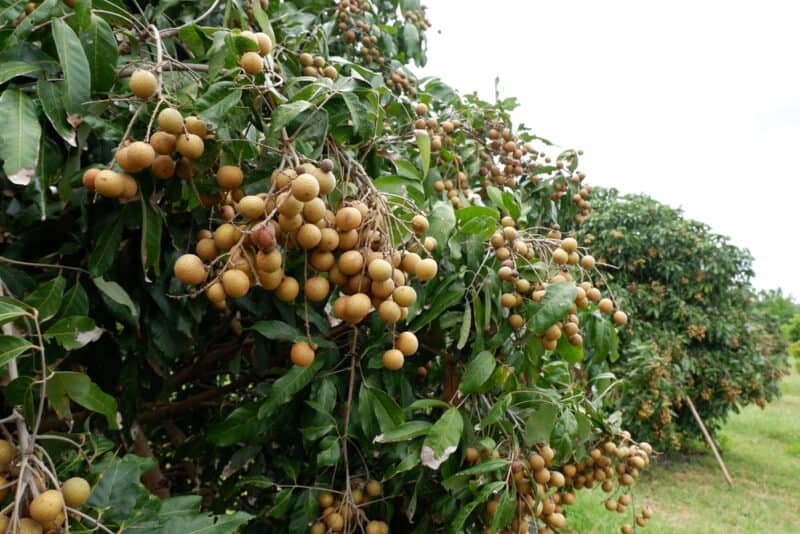
Follow these steps for successful planting:
- Fill the pot halfway with prepared soil mix.
- Place the seedling or germinated seed in the center.
- Fill soil around the roots and press gently to remove air pockets.
- Water lightly to settle the soil.
- Place the pot in bright sunlight, ideally 6–8 hours daily.
Proper planting ensures strong roots and faster establishment.
7. Sunlight and Temperature Requirements
Longan is a tropical fruit tree that thrives in sunlight:
- Sunlight: 6–8 hours of direct sunlight daily.
- Temperature: Ideal range is 20–35°C (68–95°F). Protect young plants from frost.
- Air circulation: Adequate airflow prevents fungal infections and promotes healthy growth.
Providing the right environment ensures vigorous growth, lush foliage, and eventual fruiting.
8. Watering Longan Plants
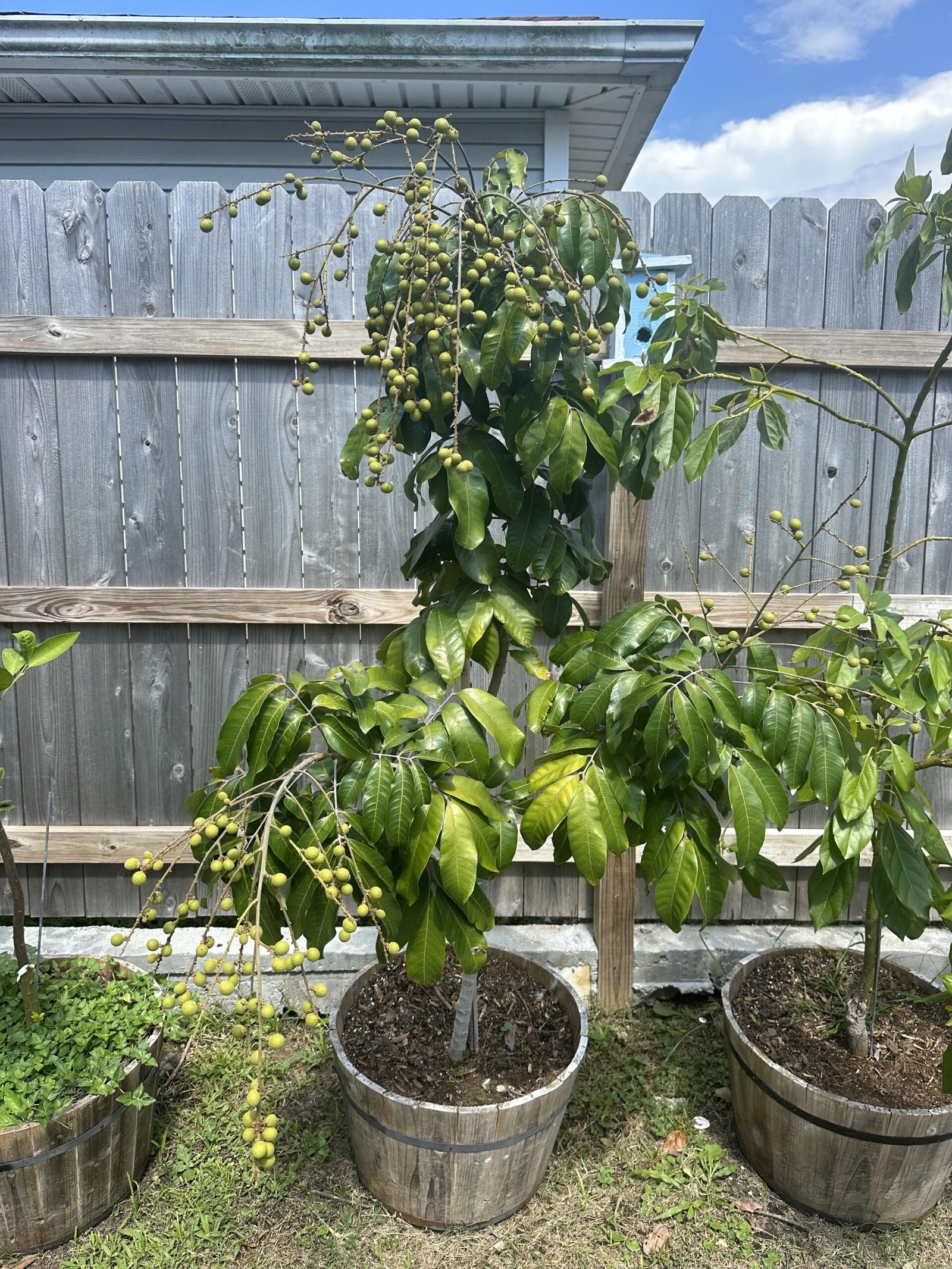
Proper watering is essential for container-grown longan:
- Keep soil moist but not waterlogged.
- Water deeply 2–3 times per week, adjusting for temperature and rainfall.
- Reduce watering slightly during dormant periods.
- Mulching helps retain moisture and regulate soil temperature.
Consistent watering promotes healthy roots, strong leaves, and fruit development.
9. Fertilizing Longan Plants
Fertilization supports growth, flowering, and fruiting:
- Nitrogen-rich fertilizers: Encourage vegetative growth.
- Phosphorus and potassium: Promote flowering and fruit formation.
- Apply organic compost or well-rotted manure for additional nutrients.
- Fertilize every 6–8 weeks during the growing season.
Proper nutrition ensures vibrant leaves, strong branches, and abundant fruits.
10. Supporting Young Longan Trees
Young longan trees may require support to grow upright:
- Use a stake or bamboo pole for stability.
- Tie the stem loosely to prevent bending or breakage.
- Gradually remove support as the plant matures.
Support ensures strong structure and optimal fruit-bearing potential.
11. Pruning Longan Trees
Pruning is important for healthy growth, sunlight penetration, and fruit production:
- Remove dead, weak, or overcrowded branches.
- Trim lateral shoots to allow airflow and light penetration.
- Prune after harvesting to stimulate new growth.
Well-pruned trees produce more flowers, larger fruits, and resist diseases better.
12. Flowering and Pollination
Longan produces small, fragrant flowers that attract pollinators:
- Most varieties are self-pollinating, but cross-pollination improves fruit size and yield.
- Bees and insects enhance natural pollination.
- Hand pollination can be done for indoor or balcony plants to improve fruit set.
Proper pollination ensures abundant fruiting and better-quality fruits.
13. Harvesting Longan Fruits
Patience is required — container-grown longan trees usually take 3–5 years to bear fruit:
- Fruits are ready when they turn light brown or golden yellow and separate easily from the stem.
- Harvest by cutting or twisting fruits gently to avoid branch damage.
- Frequent harvesting encourages continuous flowering and fruiting.
Homegrown longan fruits are sweet, juicy, and packed with nutrients, perfect for fresh consumption or desserts.
14. Common Pests and Diseases
Longan is relatively hardy but can encounter:
- Fruit flies: Cover fruits with protective bags.
- Aphids and mealybugs: Treat with neem oil or insecticidal soap.
- Fungal infections: Ensure proper air circulation and avoid waterlogged soil.
Regular inspection ensures healthy plants and high-quality fruits.
15. Long-Term Care for Longan in Pots
For sustained growth and productivity:
- Repot every 2–3 years to provide sufficient root space.
- Mulch regularly to retain moisture and improve soil fertility.
- Fertilize seasonally to support growth, flowering, and fruiting.
- Maintain pruning schedules for healthy structure and optimal fruiting.
With proper care, container-grown longan trees can produce fruits for many years, making them ideal for home gardeners.
16. Final Thoughts: Growing Longan Plants in Pots
Growing longan in pots is practical, rewarding, and space-efficient. By selecting healthy saplings, preparing well-draining soil, providing sunlight, water, fertilization, and proper pruning, you can grow a thriving longan tree at home, even without a traditional garden.
Container gardening allows urban households to experience the joy of fruit cultivation, enjoy exotic fruits, and create a lush, tropical atmosphere on terraces or balconies. With patience and consistent care, your potted longan tree will flourish, producing sweet, juicy fruits for your family.
